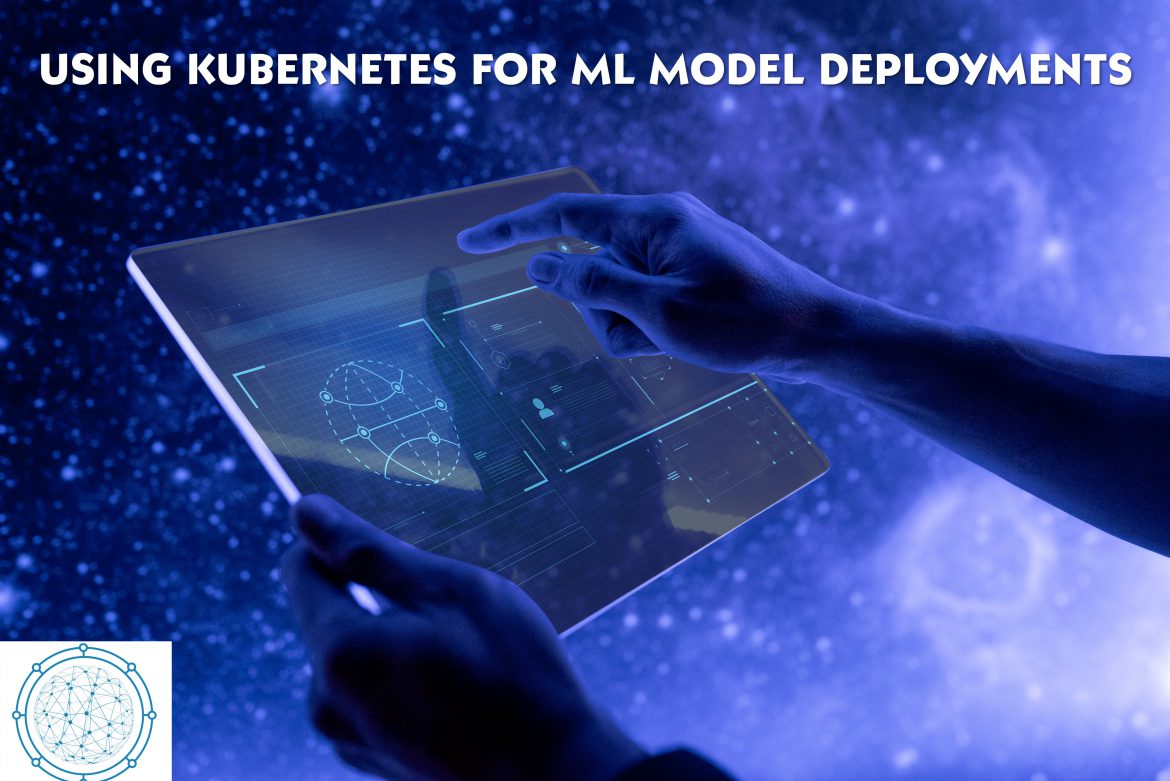Table of Contents
Using Kubernetes for ML model deployments
About the Article’s Author: Phani Teja Nallamothu
 Phani Teja is an expert in building scalable technology platforms for AI/ML, big data, Cloud, DevOps, SRE with expertise in healthcare and related fields and loves improving the health of people through technology.
Phani Teja is an expert in building scalable technology platforms for AI/ML, big data, Cloud, DevOps, SRE with expertise in healthcare and related fields and loves improving the health of people through technology.
This article was published on 16th January 2023
Deploying machine learning (ML) models can be a complex and time-consuming process, especially when done at scale. Fortunately, Kubernetes provides a powerful and efficient way to manage and deploy ML models. Organizations can increase their efficiency by using Kubernetes for ML model deployments and ensure their models are running reliably and securely. Here, we will discuss the various benefits of using Kubernetes for ML model deployments. We will look at how Kubernetes simplifies the deployment process, ensures scalability and reliability, and improves security.
Is Kubernetes still relevant in 2023?
Kubernetes is a powerful and popular tool for container orchestration and has become increasingly popular since its initial release in 2014. While its popularity has grown, the tool itself has also been improving, with new features and capabilities added regularly. In fact, it’s estimated that Kubernetes will be used to manage over 50% of cloud applications by 2023.
Kubernetes is more than just a container management platform. It offers a wide range of services that are useful for developers, such as providing scalability, high availability, and self-healing features. With the ability to quickly spin up and tear down containers, Kubernetes is also ideal for deploying microservices-based applications in cloud environments. Kubernetes is also well-suited for machine learning model deployments due to its ability to easily scale resources based on load.
Kubernetes is becoming an increasingly integral part of the cloud landscape, with more and more organizations leveraging its features to run their applications. With its powerful features and growing popularity, it’s safe to say that Kubernetes will remain relevant in 2023 and beyond.
Can Kubernetes be used for deployment?
Kubernetes is an open-source platform designed to facilitate the deployment, scaling, and management of containerized applications. It is one of the most popular container orchestration systems in use today and is quickly becoming a leading choice for deploying machine learning models.
The main benefit of Kubernetes is its ability to deploy applications quickly and efficiently. By leveraging Kubernetes’ capabilities, developers can deploy their ML models faster and with less effort than traditional methods. In addition, Kubernetes offers the flexibility of running containers on different types of infrastructure such as bare metal, virtual machines, and even clouds. This makes it easy to scale the application up or down based on demand.
Kubernetes also provides robust security and monitoring capabilities. Its robust authentication system ensures that only authorized users can access the cluster and its services. Additionally, its in-built monitoring tools allow users to track resource usage and performance in real time.
Overall, Kubernetes is an excellent choice for deploying ML models. It provides a fast, secure, and reliable way to deploy your models without having to manage the underlying infrastructure.
How is Kubernetes used in Machine Learning?
Kubernetes is an open-source platform that enables efficient, automated deployment and management of applications, including those based on machine learning (ML). This means that instead of manually configuring the infrastructure necessary to host and run ML applications, developers can use Kubernetes to easily manage the entire lifecycle of their ML models.
Kubernetes provides a range of services that are particularly beneficial when it comes to ML deployment. For instance, it enables the packaging of data science models into container images for easy deployment. It also helps with setting up self-healing clusters so that applications remain available even when nodes experience problems or failures. Moreover, Kubernetes can help with scaling up resources when demand increases, ensuring that applications continue to run smoothly.
Additionally, Kubernetes supports the integration of different components in ML systems, such as databases, queues, and message brokers. Finally, its monitoring and logging capabilities enable developers to track application performance over time, helping them identify any potential problems before they become critical.
Overall, Kubernetes can provide a great deal of flexibility and scalability when it comes to ML deployments, making it an ideal solution for ML development and production environments.
How do you deploy a Machine Learning model using Kubernetes?
Deploying a Machine Learning model using Kubernetes is a straightforward process. It requires setting up the Kubernetes cluster and then running the necessary commands to deploy the model. To begin, you need to set up your Kubernetes cluster, which can be done via the command line or through a web-based GUI such as Rancher or Kubernetes Dashboard.
Once the cluster is set up, you’ll need to create a Deployment resource in order to deploy your model. This resource contains information about the model, including the container image, memory limits, environment variables, and so on. Once the Deployment resource has been created, it’s time to run the kubectl command to deploy the model.
Finally, you need to create a Service resource that will expose the deployed model to external traffic. This service will manage traffic routing, load balancing, and more. Once this Service resource is created, your Machine Learning model is now ready for external traffic.
Kubernetes provides an easy-to-use framework for deploying Machine Learning models that enables scalability and reliability. It ensures that resources are managed efficiently and that the model is always running correctly. With Kubernetes, deploying Machine Learning models can be done quickly and easily.
Did you find interesting this article: “Using Kubernetes for ML model deployments”?
If you find interesting this article about “Using Kubernetes for ML model deployments”, you may also be interested in:
Machine Learning Pattern Recognition





